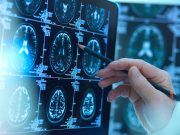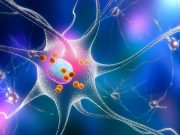Tag: Parkinson’s
Subthalamic Deep Brain Stimulation Effective Long-Term for Parkinson Disease
At five years, significant improvement was sustained in motor and activities of daily living scores
Positive Association Seen for Ambient Trichloroethylene, Parkinson Disease Risk
Greater PD risk suggested in area surrounding two of the three highest TCE-emitting facilities
Metabolic Syndrome Linked to Increased Risk for Parkinson Disease
Highest risk for Parkinson disease seen for participants with metabolic syndrome and high PD-related polygenic risk score
Regular Exercise Linked to Slower Neurodegeneration in Parkinson Disease
Associations seen for average regular physical activity levels over time with slower cortical thinning in temporoparietal cortical regions
Dogs Can Differentiate Between People With Parkinson Disease, Controls
High sensitivity and specificity seen with two dogs undergoing 38 to 53 weeks of training on 205 samples
Autism Spectrum Disorder Linked to Increased Risk for Parkinson Disease
Association seen even after adjustment for sex, socioeconomic status, family history of mental illness and PD, age at autism diagnosis
Ultraprocessed Food Consumption Linked to Nonmotor Prodromal Parkinson Disease
Odds of having three or more versus zero prodromal features increased when comparing extreme quintiles of UPF intake
Common Medications Tied to Older Age at Onset of Parkinson Disease
Almost 10-year delay seen for patients who were started on adrenergic blockers before onset of PD symptoms
AAN: Tavapadon as Adjunct to Levodopa Ups Daily ON Time in Parkinson Disease
Significant reduction also seen in change from baseline in daily OFF times versus placebo
Globally, 25.2 Million Projected to Be Living With Parkinson Disease in 2050
Primary contributor to increase in cases from 2021 to 2050 is population aging, followed by population growth














